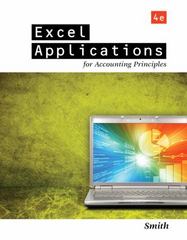Question
Question 1: The amendments in this proposed Update would require that public business entities disclose specific categories in the rate reconciliation, with further disaggregation of
Question 1: The amendments in this proposed Update would require that public business entities disclose specific categories in the rate reconciliation, with further disaggregation of certain reconciling items (by nature and/or jurisdiction) that are equal to or greater than 5 percent of the amount computed by multiplying the income (or loss) from continuing operations before tax by the applicable statutory federal (national) income tax rate.
a. Should any of the proposed specific categories be eliminated or any categories added? Please explain why or why not.
The following proposed categories should be eliminated:
b. Should incremental guidance be provided on how to categorize certain income tax effects in the proposed specific categories? If so, please describe the specific income tax effect and explain how it should be categorized and why.
c. Do you agree with the proposed 5 percent threshold? Please explain why or why not.
Question 2: The proposed amendments would require that public business entities provide a qualitative description of the state and local jurisdictions that contribute to the majority of the effect of the state and local income tax category. A qualitative description of state and local jurisdictions was selected over a quantitative disclosure because state and local tax provisions are often calculated for multiple jurisdictions using a single apportioned tax rate. Do you agree with the proposed qualitative disclosure as opposed to providing a quantitative disaggregation? Please explain why or why not.
Question 3: The proposed amendments would require that public business entities provide an explanation, if not otherwise evident, of individual reconciling items in the rate reconciliation, such as the nature, effect, and significant year-over-year changes of the reconciling items. Do you agree with the proposed disclosure? Please explain why or why not.
Question 4: For investors, would the proposed amendments to the rate reconciliation disclosure result in more transparent and decision-useful information? If so, how would that information help assess income tax risks and opportunities and how would it influence investment and capital allocation decisions? If not, what additional information about rate reconciliation should the Board require?
Question 5: For preparers and practitioners, would the proposed amendments to the rate reconciliation disclosure impose significant incremental costs? If so, please describe the nature and magnitude of costs, differentiating between one-time costs and recurring costs.
Question 6: Are the proposed amendments to the rate reconciliation disclosure clear and operable? Please explain why or why not.
Question 7: The Board decided not to provide incremental guidance for the rate reconciliation disclosure for situations in which an entity operates at or around break even or an entity is domiciled in a jurisdiction with no or minimal statutory tax rate but has significant business activities in other jurisdictions with higher statutory tax rates. Do you agree with that decision? Please explain why or why not, and if not, what incremental guidance (including the relevant disclosures) would you recommend?
Question 8: The proposed amendments would require that public business entities provide quantitative disclosure of the rate reconciliation on an annual basis and a qualitative description of any reconciling items that result in significant changes in the estimated annual effective tax rate from the effective tax rate of the prior annual reporting period on an interim basis. Do you agree with that proposed frequency? Please explain why or why not. Question 9: The proposed amendments would require that all entities disclose the amount of income taxes paid (net of refunds received) disaggregated by federal (national), state, and foreign taxes, on an annual and interim basis, with further disaggregation on an annual basis by individual jurisdictions in which income taxes paid (net of refunds received) is equal to or greater than 5 percent of total income taxes paid (net of refunds received). Do you agree with the proposed 5 percent threshold? Please explain why or why not. Do you agree that income taxes paid should be disclosed as the amount net of refunds received, rather than as the gross amount? Please explain why or why not.
Question 10: For investors, would the proposed amendments to the income taxes paid disclosure result in more transparent and decision-useful information? If so, how would that information help assess income tax risks and opportunities and how would it influence investment and capital allocation decisions? If not, what additional information about income taxes paid should the Board require?
Question 11: For preparers and practitioners, would the proposed amendments to the income taxes paid disclosure impose significant incremental costs? If so, please describe the nature and magnitude of costs, differentiating between one-time costs and recurring costs.
Question 12: Are the proposed amendments to the income taxes paid disclosure clear and operable? Please explain why or why not.
Question 13: The proposed amendments would require that all entities disclose (a) income taxes paid disaggregated by federal (national), state, and foreign taxes on an interim and annual basis and (b) income taxes paid disaggregated by jurisdiction on an annual basis. Do you agree with that proposed frequency? Please explain why or why not.
USE THE PDF LINK BELOW TO ASSIST PAGES 1-7
https://www.fasb.org/Page/ShowPdf?path=Proposed+Accounting+Standards+Update%E2%80%94Income+Taxes+%28Topic+740%29%E2%80%94Improvements+to+Income+Tax+Disclosures
Step by Step Solution
There are 3 Steps involved in it
Step: 1

Get Instant Access to Expert-Tailored Solutions
See step-by-step solutions with expert insights and AI powered tools for academic success
Step: 2

Step: 3

Ace Your Homework with AI
Get the answers you need in no time with our AI-driven, step-by-step assistance
Get Started


